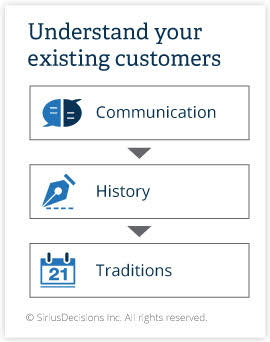Customer Insight Roadmap: Three Steps Toward Knowing Your Customers Better
- Here are a couple of ways to start the process of understanding your customers
- Communication, history and traditions can help you understand your existing customers
- Marketers need to understand customers so that they can build programs to support customer retention, growth and advocacy
For many families, travel is a common summer vacation activity. Whether this means loading up the family vehicle for an extended road trip to see the sights or jumping on a plane for adventures in foreign lands, travel remains an essential part of summer break. I just returned from a couple of weeks in Europe and always find it incredibly fulfilling to spend time getting to know the intricacies of each unique culture we visit. Prior to each trip, we do our best as a family to do our research to understand the fundamentals of each country, including communications/language basics, history and traditions (culinary, religious, ceremonial). Doing this homework in advance invariably delivers a much more rewarding experience once we’re in the country.
 B2B marketers can follow a similar model when seeking to understand more about their existing customers. Here are a couple of ways to start the process:
B2B marketers can follow a similar model when seeking to understand more about their existing customers. Here are a couple of ways to start the process:
- Communication. How does each contact within existing accounts prefer to be contacted? Are there communication preferences that need to be considered? What methods is your company utilizing to ensure you know customers’ communication preferences and adhere to them? Equally important, is this monitored over time to account for any changes? Customer communication needs change as the customer relationship evolves. Best-in-class marketing organizations pay attention to these changes and do their best to adjust communication strategies accordingly.
- History. How does your organization account for the tenure of each customer account (or, more specifically, each contact)? Use the SiriusDecisions Customer Lifecycle Framework to help plan your strategy for managing customer lifecycle needs and plotting your actions to meet customer requirements. Just as each personal relationship has a history, customer relationships are complex and must account for what’s transpired, good and bad, over time. Healthy long-term company/customer relationships incorporate the elements of honesty and transparency.
- Traditions. What unique elements separate each customer from one another? Just as every contact is different, the overall culture of each organization is unique. Understanding these cultural nuances is often the key to maintaining the relationship over the long term. This is why so many companies and customers regularly describe “fit” as the wild card that keeps the relationship on track. Understanding that not every customer progresses through the lifecycle at the same rate is a good place to start. Marketers must consider the unique DNA of each customer organization to truly understand customer intimacy.
When asked why they travel, most serial travelers cite one of the key benefits as the rewards that come from understanding another culture. These insights help us understand more about our own world. Marketers can apply the same principles to develop a greater sense of intimacy with their customer base, so that they can build programs to support customer retention, growth and advocacy.
